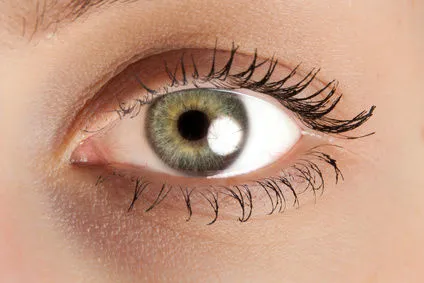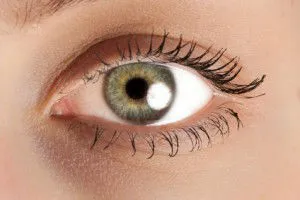
- Share on Facebook119
- Share on Pinterest
- Share on Twitter
Just as your legs and arms can become weak due to lack of exercise, so can the muscles in your eyes. In particular, the ciliary muscles that control the lens of the eye.
These muscles are responsible for altering the curvature of the eye lens to achieve the proper focus of whatever you are looking at. Proper focus requires the the precise amount of light to fall on the retina. Although we do not feel our ciliary muscles working, they help us achieve focus over one thousand times a day without us even knowing it.
Eye Exercises for Focus
Eye exercises for focus are so easy to do, you need only be outside on a bright day to do this eye focus exercise properly.
- Find a quiet place where you can be undisturbed for 15 minutes or so and make yourself comfortable. To avoid too much light, find a place where the sun is at your back or wear a hat.
- Identify three contrasting objects at distances of three, 15 and 50 meters (or yards) away. If you have poor vision, find objects a bit closer. Be sure that the first object is close enough to you that you can see it well.
- Avoid objects that have reflective surfaces such as windows or metal and also avoid water. Search instead for objects with bright-dark contrasts.
- Close your eyes for about 5 seconds.
- Open them and look at the closest object for 5 seconds. Do not blink.
- Close your eyes for about 5 seconds.
- Open them and look at the next closest object for 5 seconds. Do not blink.
- Close your eyes for about 5 seconds and look at the object furthest away. Do not blink.
- Repeat the above 3 times.
Extraocular Muscle Exercises
There are six muscles in each eye including muscles for left, right, up and down and circular motions. It makes sense that in order to strengthen these muscles we would need to replicate these movements.
During day to day living we only make small movements to view things in our path so that our eyes do not really get a great “workout” per say. We rarely keep the head still and move only the eyes.
Start by moving the eyes to the extreme left then to the extreme right, way up and then way down, up to the left and up to the right, bottom left and bottom right, 10 rotations in one direction and 10 in the other. It is important to keep the head still and only try to engage the eyes.
This exercise will help relieve tension and may reduce headaches and improve vision while strengthening the extraocular muscles that surround the eye. Do not do these exercises if they cause you pain – work towards strain, not through it.
Nutrition is Important
Eating a healthy, organic and varied diet is imperative to optimal eye health. The vitamins, minerals and carotenoids contained in certain foods have been linked to the prevention of cataracts, eye disorders and age-related macular degeneration (AMD).
A variety of vitamins and minerals are essential to maintaining healthy eyes, as they are needed by the body to help prevent damage caused by UV light rays. According to Professor Ian Grierson, the head of ophthalmology at the University of Liverpool, vitamins A, C, E and zinc, as well as carotenoids are key to eye health and the prevention of sight loss.
Professor Grierson calls the carotenoids lutein and zeaxanthin, “the macula’s sunglasses,” as they protect the macula by absorbing blue and near-ultraviolet light. These carotenoids are found in yellow and orange-colored vegetables, as well as in leafy greens such as spinach and kale. Professor Grierson recommends eating 6 milligrams of lutein per day for optimal eye health.
Another important nutrient associated with eye health is lycopene, which is found in tomatoes and watermelon. Lycopene has also been linked to aiding prostate cancer prevention.
Both lutein and lycopene are absorbed better by the body in combination with fats. So, when serving kale or heirloom tomatoes, for example, add a bit of grass-fed butter, organic olive oil or organic coconut oil to your dish.
Additionally, a study performed in 2004 at Ohio State University found that carotenoids, including lutein, were absorbed better by the body when combined with avocadoes and avocado oil.
Ophthalmologist David Allamby recommends foods rich in omega-3 and omega-6 fatty acids for keeping eyes healthy. These essential fatty acids are found in oily fish, flax seeds and nuts. Dr. Allamby explains, “tear film has a layer of oil which helps keep water on the surface of the eye. If you are deficient in omega-3′s, you may suffer dry, uncomfortable eyes.”
With a variety of nutrient-rich and delicious foods to choose from, you can keep your eyes – and the rest of your body – in a state of optimal well-being.
Avoid Toxins
Smoking is linked to many diseases and chronic illnesses, including serious eye conditions. If you smoke, stop as soon as possible and stay away from tobacco smoke, as well as other forms of pollution such as exhaust fumes.
Toxic cigarette smoke is linked to many serious eye conditions. It’s been shown to increase the risk of developing optic nerve damage as well as age-related macular degeneration, which can lead to blindness.
 Do everything possible to stay away from tobacco smoke, exhaust fumes, and other kinds of polluted air. For those who stop smoking, the risk of eye disease becomes almost as low as for people who never smoked at all. The body is built to help heal itself.
Do everything possible to stay away from tobacco smoke, exhaust fumes, and other kinds of polluted air. For those who stop smoking, the risk of eye disease becomes almost as low as for people who never smoked at all. The body is built to help heal itself.
Trans fats, which are found in many processed foods, are also thought to interfere with the omega-3 fats in the body, which are essential for good eye health. Trans fats have also been linked to macular degeneration. This is just one more reason to avoid foods that contain them such as margarine, shortening, fried foods, cookies and crackers.
Don’t take your eyesight for granted – treating your eyes right now will help save your vision so that you can enjoy it well into old age.
-The Alternative Daily
Sources:
https://www.youtube.com/user/envisionselfhealing?feature=watch
http://www.telegraph.co.uk/health/wellbeing/8390367/Can-you-eat-your-way-to-better-sight.html
http://www.cancer.org/treatment/treatmentsandsideeffects/complementaryandalternativemedicine/dietandnutrition/lycopene
- Share on Facebook119
- Share on Pinterest
- Share on Twitter

